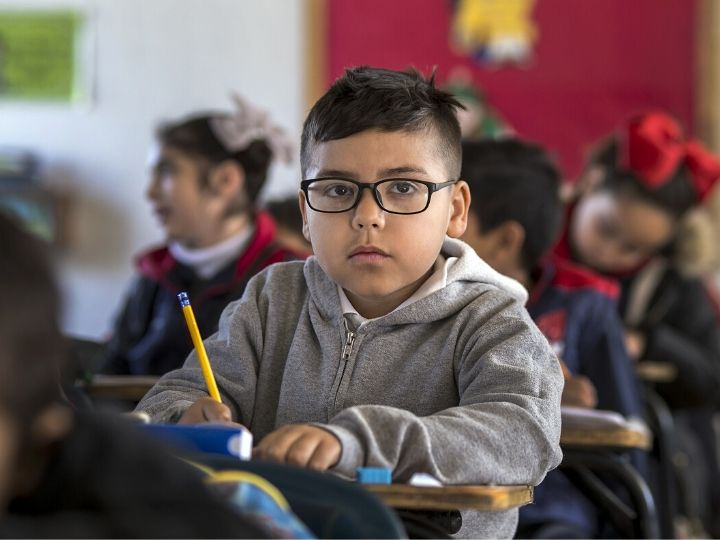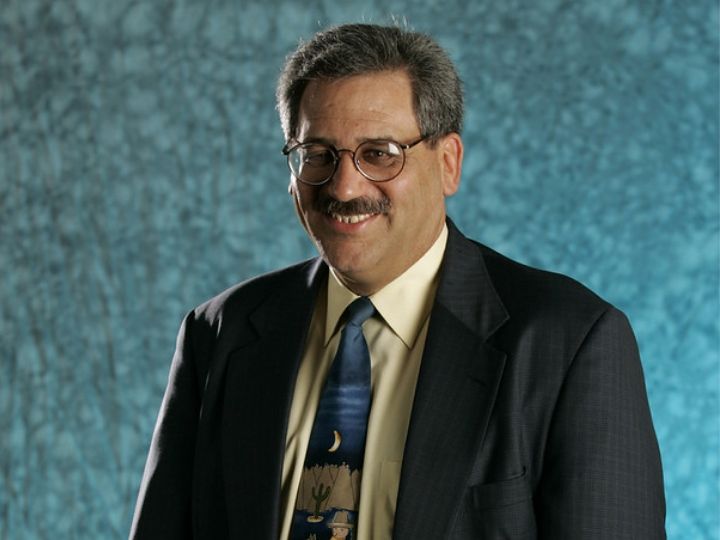

With a five-year, $10 million grant from the Institute of Education Sciences, David Francis, Hugh Roy and Lillie Cranz Cullen Distinguished University Chair of Psychology, will create and direct a national research and development center at the University of Houston for English Learners. The center will be part of the UH Texas Institute for Measurement, Evaluation, and Statistics (TIMES), of which Francis is director. Presently, 100% of the funding for the new center will come from federal sources.
When the IES sent out requests for applications, they had a seemingly overwhelming request – who can level the playing field for middle and high school students who grow up hearing a language other than English in their homes?
Turns out Francis and his team, who had been studying these barriers for years, had the right ideas and ways of dividing the work into streams. With co-principal investigators, the center will conduct research aimed at improving policies and system-level practices, overcoming instructional barriers, developing and evaluating practices that improve access to content, and will also launch leadership activities to build the program at a local, regional and national level.
The investigative team includes Sharon Vaughn, Philip Capin, Leticia Martinez, University of Texas at Austin; Diane August and Joel Gómez, Center for Applied Linguistics; Catherine Snow, Harvard Graduate School of Education; Michael J. Kieffer and Lorena Llosa, New York University; Suzanne Donovan, founding executive director of the Strategic Education Research Partnership; Coleen Carlson and Jeremy Miciak, University of Houston.
The team is already clear about educational approaches that don’t work, like splitting students into groups based on language proficiency, a method called tracking.
“Tracking is a poor practice from an educational perspective. Students get routed into weaker instruction because it’s believed that’s where they belong and they end up not fully participating in grade level content and instruction, and so they get much further behind,” said Francis, who said to get everyone into grade-level instruction, the lessons must be taught in a way that is accessible so every child can be properly challenged.
Chief among strategies to improve education for English Learners is putting content in the foreground of lessons, rather than language, and using activities that are engaging and meaningful to students. The center will develop and test interventions that leverage transdisciplinary approaches to improve instruction for English Learners.
“Think about when you took science, how did they teach it to you? They used words because they were relying on your knowledge of language to convey meaning to you,” said Francis. “This is fine for those proficient in the language, but as humans we have more cognitive resources available to us to make meaning of information,” said Francis, who suggests adding visual methods such as videos or interactive learning.
The center will focus on weaving topics into the full curriculum, using real world examples, that are engaging and directly relevant to students of this age. One example, called Word Generation, uses a variety of instructional activities around topics like immigration or refugees that are naturally interesting to students, in order to introduce new vocabulary and background knowledge. Activities related to the topic appear in multiple content areas from reading and language arts to social studies to mathematics and science. The theme itself can be picked up in each content area but be focused on in a slightly different way, reinforcing the new vocabulary. In math, for instance, how do the percentages of refugees compare across the years? In social studies, what is the history of immigration and politics behind it?
These kinds of practices, which make content more accessible to English Learners, will also make it more accessible and compelling to all students.
“When you make instruction more interesting and meaningful to English Learners, you don’t do it in a way that holds back students who are English proficient. You don’t sacrifice achievement, you actually make it more compelling for all students,” said Francis.
The center will review these various methods along with team learning and test them in classrooms in Texas and New York. They will also build a formative assessment program to enhance the effectiveness of the instructional strategies and teachers’ feedback to students.
The center begins its work with students in sixth and ninth grades in the subjects of social studies and science. Partnerships include Texas Education Agency, Research Alliance for New York City Schools, New York Department of Education, Pharr-San-Juan-Alamo Independent School District, Austin Independent School District and the Aldine Independent School District.
“We are going to work very hard to help schools improve educational outcomes for students who speak a language other than English as their first language and really try to improve educational systems so they’re better designed to achieve the outcomes everyone wants for their English Learners, as well as what English Learners want for themselves,” said Francis.